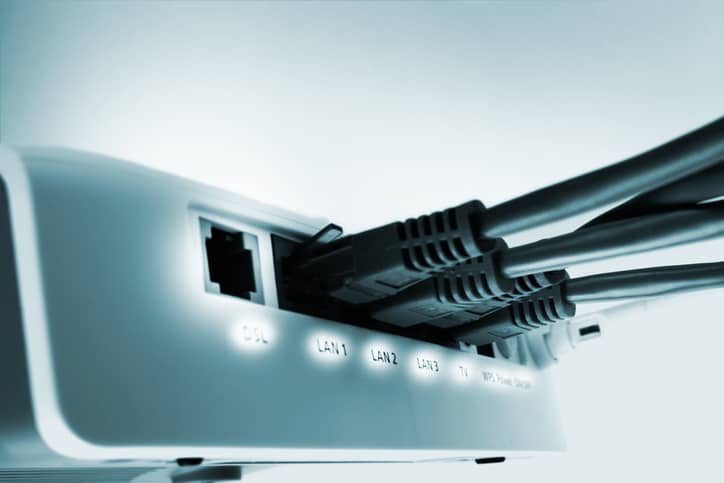If you’ve ever wondered about the differences between LAN, MAN and WAN, you’re not alone. Some may believe that all three of these network fixtures in the home can be installed by electricians, but that isn’t always the case. Further, these three acronyms are often used interchangeably, but there are some essential differences between them.
Find out what LANs, MANs and WANs are and what the key differences are between these three networks.
What is a LAN?
A Local Area Network (LAN) is a network that covers a small geographical area, like a home or office. LANs are usually created using Ethernet cables or wireless technologies like Wi-Fi. The main advantage of LANs is that they offer high speeds and low costs. LANs are typically used to connect computers and devices within a single building or campus. They usually consist of a small number of nodes (computers, printers, etc.) connected by a high-speed backbone network. LANs can be further divided into two sub-types: peer-to-peer and client-server.
In a peer-to-peer LAN, each node can directly communicate with any other node on the network. This type of LAN is typically used for small or home office (SOHO) applications. In a client-server LAN, each node is assigned a specific role. Some nodes act as servers, providing shared resources such as files and printers, while others act as clients that request and use those resources. This type of LAN is more common in larger organizations.
What is a MAN?
A Metropolitan Area Network (MAN) is a network that covers a larger geographical area, like a city. MANs are usually created using optical fibres or other types of high-speed cables. The main advantage of MANs is that they offer high speeds and low costs. MANs are similar to LANs in many respects but are typically used to connect devices over a much larger geographic area. A MAN might span an entire city, for example, connecting different buildings and locations within that city. As with LANs, MANs can be either peer-to-peer or client-server.
What is a WAN?
A Wide Area Network (WAN) is a network that covers an extensive geographical area, like an entire country or the world. WANs are usually created using optical fibres or other types of high-speed cables. The main advantage of WANs is that they offer high speeds and low costs.
The Differences Between LAN, MAN & WAN
The main difference between LANs, MANs and WANs is the area size they cover. LANs are small, MANs are medium-sized, and WANs are large. Another difference is the type of infrastructure that is used to connect the different parts of the network. For example, LANs can be connected using Ethernet cables or wireless technologies like Wi-Fi, while MANs and WANs are usually connected using optical fibres or other high-speed cables. Finally, the benefits of LANs, MANs and WANs differ depending on the user’s specific needs.
Uses
LAN, MAN and WAN are three common network topologies. LAN stands for local area network, MAN stands for metropolitan area network, and WAN stands for wide area network. Each one has its advantages and disadvantages. For example, LANs are great for small businesses or home networks because they are relatively easy to set up and manage. However, they are not well suited for large networks because they can be slow and have limited bandwidth.
MANs are a good choice for medium-sized networks. They offer more speed and bandwidth than LANs, but they can be more expensive to set up and manage. WANs are the best choice for large networks. They offer the largest amount of speed and bandwidth, but they can be very expensive to set up and manage.
Which one is right for you
When deciding which network will work best for you, you must consider your needs and what is most suitable for your household. If you have a small network, a LAN might be the best choice. If you have a medium-sized network, a MAN might be the best choice. And if you have a large network, a WAN might be the best choice.
In conclusion, LANs, MANs and WANs are three types of networks that differ in size and infrastructure. LANs are small and can be connected using the internet or Wi-Fi, while MANs and WANs are large and usually require high-speed cables for connection that can be installed with the help of an electrician. The benefits of each network also differ depending on the user’s needs.

Recent Comments